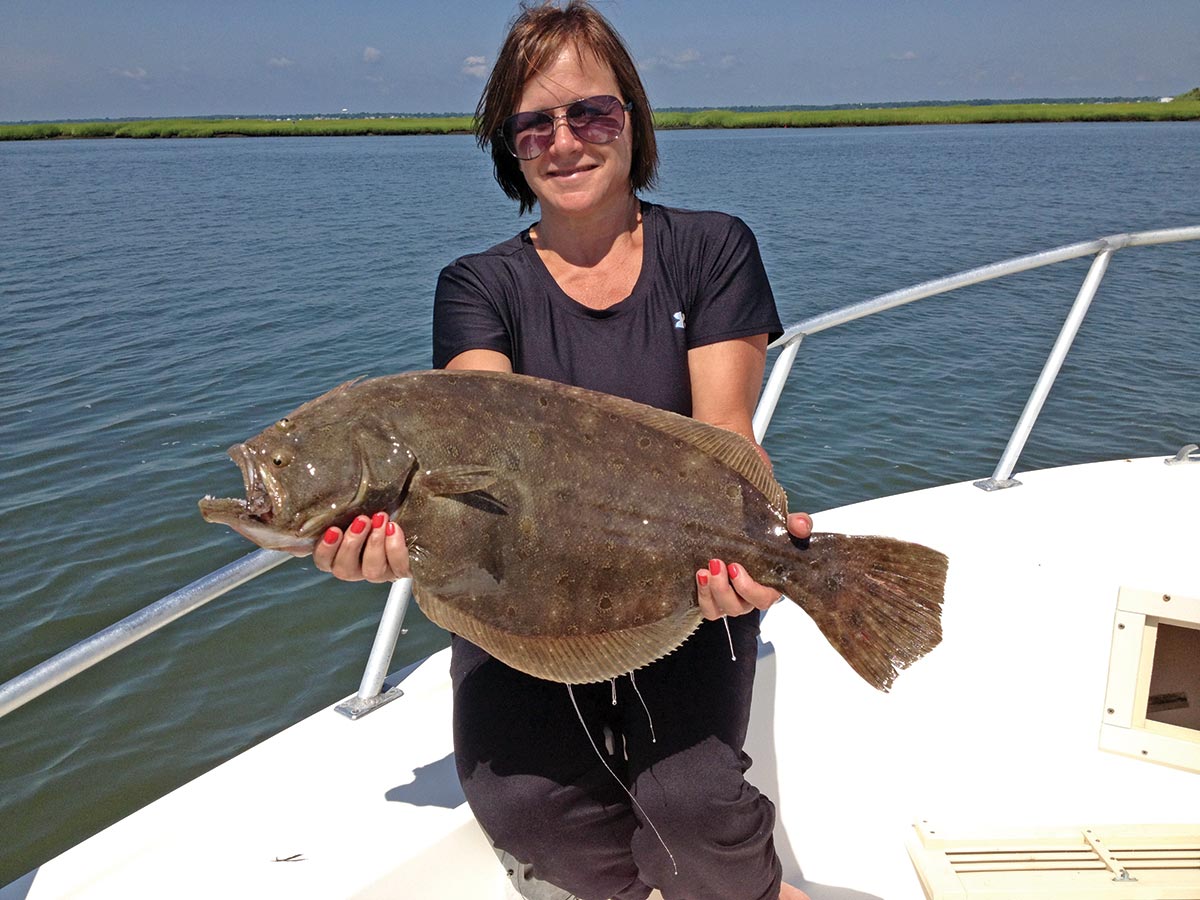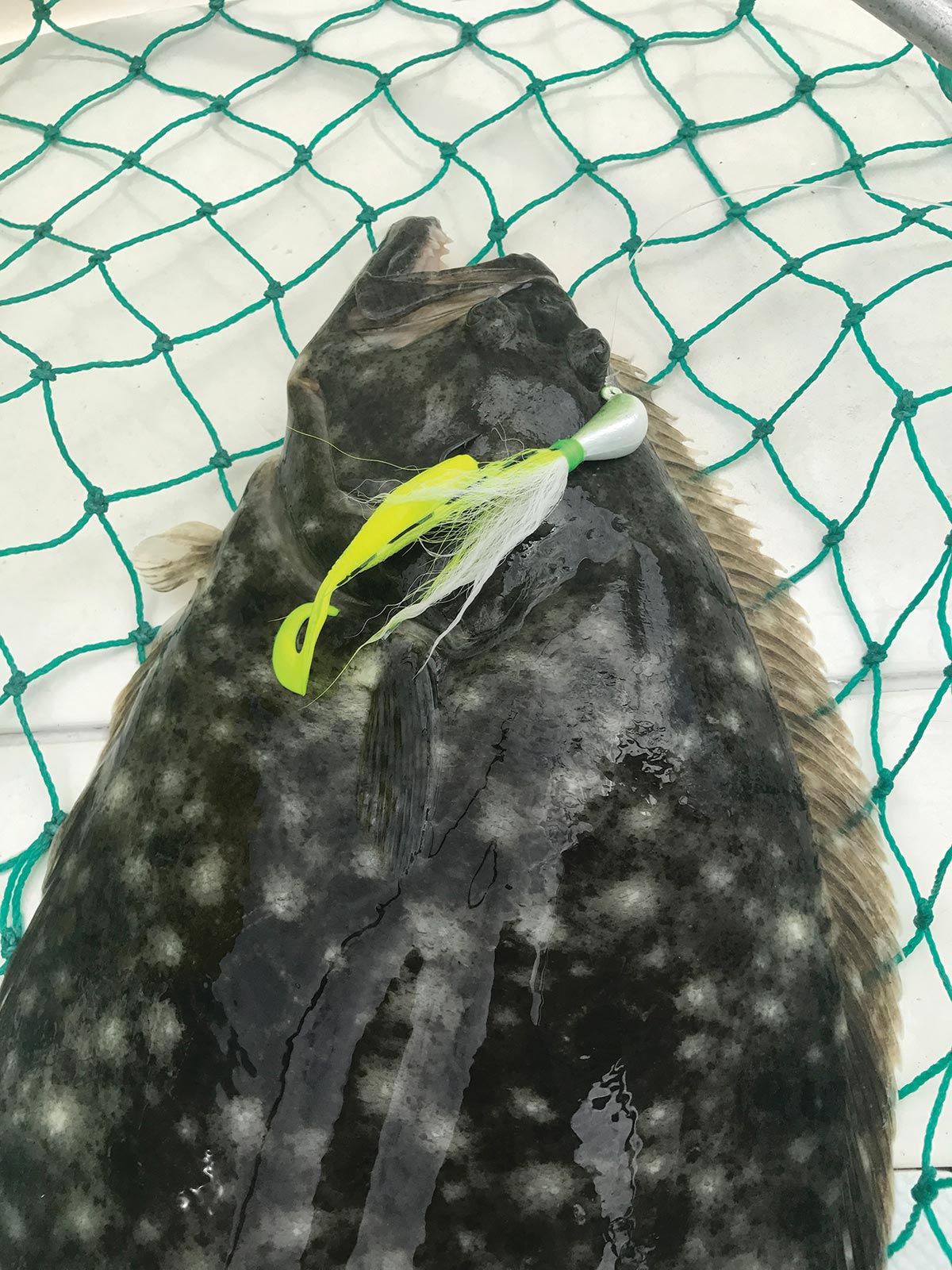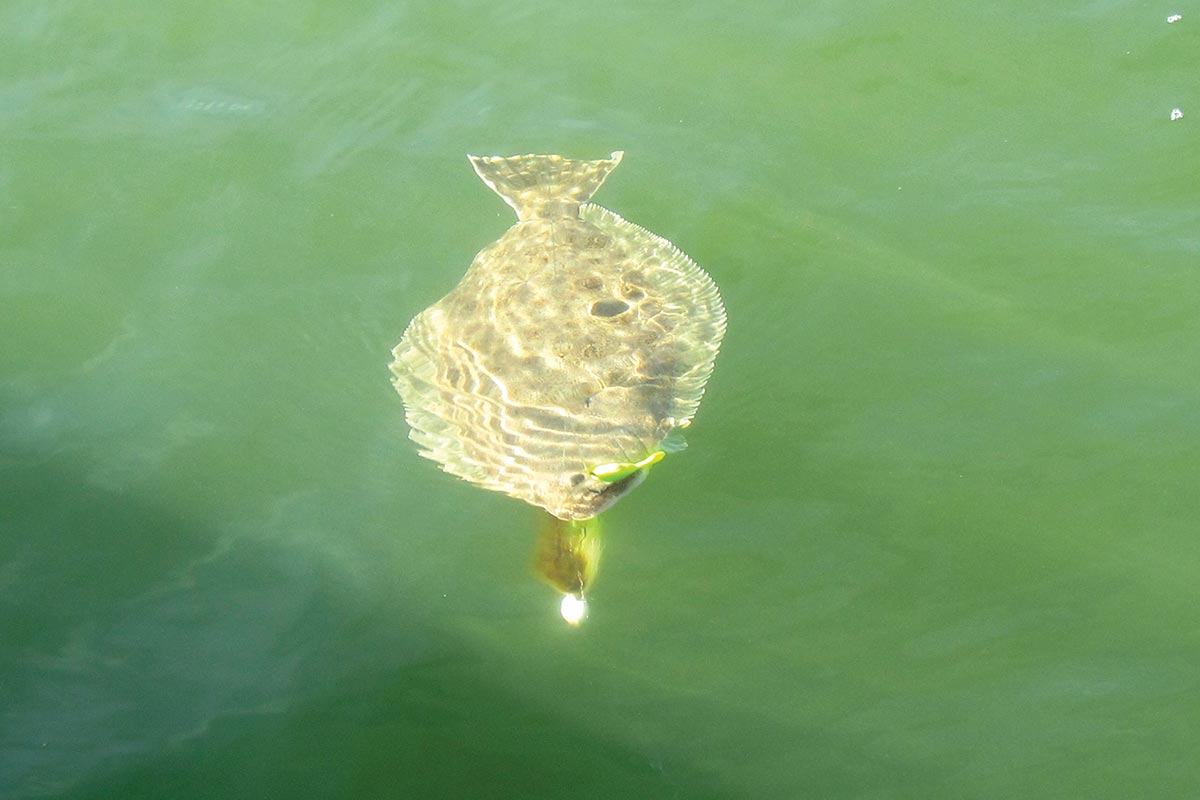
June is prime time for hitting the back bays from Barnegat to Indian River in search of flatties.
While anyone can drift for fluke and catch some, there are new products and new techniques that have changed the way savvy fluke fishermen get after it! Think about it; early season in the back bays, the bait is normally small. It won’t be for a month or so until we see the tiniest peanut bunker arrive on scene. The primary forage available to these hungry and often large early summer flounder is minnows, spearing, grass shrimp and small crabs. So, while the “squid and minnow combo” drifted on a fluke rig will catch some fish, a well-presented jig tipped with Gulp will often out-catch the drifted rig in the hands of the skilled fisherman.
While the northern bays boast a lot of snags, the southern part of the state has mostly sandy bottom. Your biggest problem is more likely to be fouling with seaweed than getting snagged on boulders and debris fields.
Drifting along with one bait flipped off the back of the boat maybe 30 feet or so, the other rod in hand, with a more vertical presentation dropped straight to the bottom, and a snappier action given to this jig. Sometimes the jig rod will get a hit, but alas I miss the fish. Sure enough, as the drifted bait comes toward this fish, I get a shot at redemption! If you do find yourself fishing snag infested waters, try putting the rod in the holder and use a heavier jig a couple of turns off the bottom.
Wind & Tide

You may get lucky while drifting aimlessly around the area where other boats are fishing, but there are plenty of excellent fish holding bottom around that others overlook. Let’s talk about a flat on the edge of the Intercoastal waterway (ICW). It’s 6 feet deep at high tide, and often maybe 2 feet at low tide. The ICW may be 20 feet deep off the gradual edge of this particular flat. Just look at the direction of the tidal flow and the direction you will drift. Will the tide push you down the edge of the flat? Great, even better if the gentle breeze pushes you off.
Now you have the tide pushing you to the north, and the breeze pushing you to the east. You can work the edge of this flat where it empties into deeper water. If I can move my boat into about 8 feet of water to begin my drift, I am in a great spot to start prospecting. By prospecting I mean searching for a small area that is holding a concentration of fish, or a concentration of larger sized fish. Try casting your long rod into the shallower water and let it drift off the edge. When you find the fish, focus on that zone and rack ‘em up!
While a moving tide provides great drifting conditions, slack water has helped me catch my largest fluke in the back! Try casting your jig out as far as you can and let it touch bottom. Work it back to you until you feel a hit. If you had fish in a spot but the drift changed, try working that same bottom by casting to it. That’s an excellent time to try a vertical jigging in the deeper water, high current spots that you could not properly fish when the tide was moving fast. Rough bottom next to the sedge bank holds some dandy fish! If you snag and break off, then so be it. Big fish like structure and you gotta be in it, to win it!
That 60-foot deep hole can be fished effectively with only a gentle breeze moving you along. Try drifting a different “lane” across the hole and you may find fish are holding on one side of the hole, or perhaps even in the center of the deepest section. As the tide slacks out, plan where you will be presenting your baits next; maybe it’s a spot that others drive over all morning long on their way out, and here you are rod doubled over—yea, you know that spot!
Aim Small, Miss Small
Small jigs in the half- to 3/4-ounce range get the most play on my boat in this early season game. S&S Fluke Master bucktails were designed specifically for this fishery. The new silicone skirt Big Eye jigs have a great look in the water; another NJ born and bred product comes from Non-Pareil in the form of the silicone-skirted Fluke Bullethead jig. Tsunami and Andrus jigs make good products as well. Day to day the size and color will be the most determining factor to your success. The slower the drift, the lighter the jig should be.
Use the lightest jig that you can that will keep you touching the bottom every few seconds. If the current picks up, you may need to use up to an ounce or more to stay in the zone. Then again, you may need to find shallower water or less current to make the proper presentation. Chartreuse and white, white, or pink have all proven to be excellent fish catchers. If the outgoing tide has a murky or dirty look to it, try the brighter chartreuse or pink. The incoming tide will be cleaner and white may get the best action here.
Light jigs mean light line and light rods as well! Adding more fun to the game, I use 10-pound test Daiwa J Braid eight-strand braided line. This light line is super smooth and easy to handle. It ties knots very well and lays flawlessly on my braid friendly reel. I tie a Slim Beauty knot to a 3-foot length of 20-pound fluorocarbon leader material to keep in the stealth mode. Try fishing a dropper loop midway in your leader. Lock a Gamakatsu bait holder hook in size 5/0 on your dropper loop. This hook will be a great choice here as the very small fish won’t be so quick to swallow the larger hook.
Rather than a snap at the end of the leader, try a 3-inch double surgeons’ loop to attach your jig. Pass the double line through the hook eye and pass the entire jig through the loop itself, locking the jig on the loop. No hardware, super stealth, and easy to change your jig if you want to change color or size.
Tip your jig with a 3- or 4-inch Gulp swimming mullet or shrimp. The swimming mullet makes a great presentation on the jighead when “lip hooking” the swimming mullet through the nose. If you thread the Gulp on the hook too far it will cause the jig’s hair to flair out making the profile of your bait unnatural. On the dropper loop hook try using a 4-inch shrimp in the new penny color. It is an excellent copy of a mantis shrimp, a natural forage this time of the year.

Lighten Up & Fight Right
This light tackle game is so perfectly matched to catching fluke, especially large ones, and often more effectively than with the heavier gear. We’ve all seen fluke on their way to the net just stop and give that gill-rattling head shake; pay attention to what’s going on as you are fighting the fish. You will feel that head shake at least several times as the fish comes to the net. The larger the fish, the longer the fight, the more gill rattling and head shaking will happen as the big old doormat tries to rid itself of the force pulling it toward the surface. Keep your rod tip up, but do not pump the rod! Let the rod do its job and absorb the energy and keep the hook stuck.
I prefer very light spinning gear for this game as it easily casts these light weight jigs as far as I want. At the end of the cast, put the rod in the holder with the bail open and close it when the jig stops falling. By fishing two spinning rods this way I don’t have to thumb the spool and wait for it to touch bottom before casting my second rod in.
My favorites for this light tackle game prove that you don’t need to spend huge amounts of money to get excellent gear. The lightest spinning rods in the Tsunami Slow Pitch and Slim Wave rods will be perfect for this game. Jigging World, St. Croix and Century Rods also have excellent rods in this category. Coupled with the smallest Daiwa BG or Tsunami EVICT spinning reels, these outfits will quickly become your favorites. These rods and reels have all the line and power needed to fish these shallow waters. Your light tackle presentation will get so much better.
The beauty of drifting for fluke in the back is the simplicity of it all. Warming air, a nice slow drift, watching an egret pick off baitfish as they pour from the flooded marsh. The osprey in its nest with its new babies.
Summer is right around the corner with its hustle and bustle, but for right now at least, it’s just you, your jig, and a big brown rug that says “welcome” to South Jersey fishing at its best.



